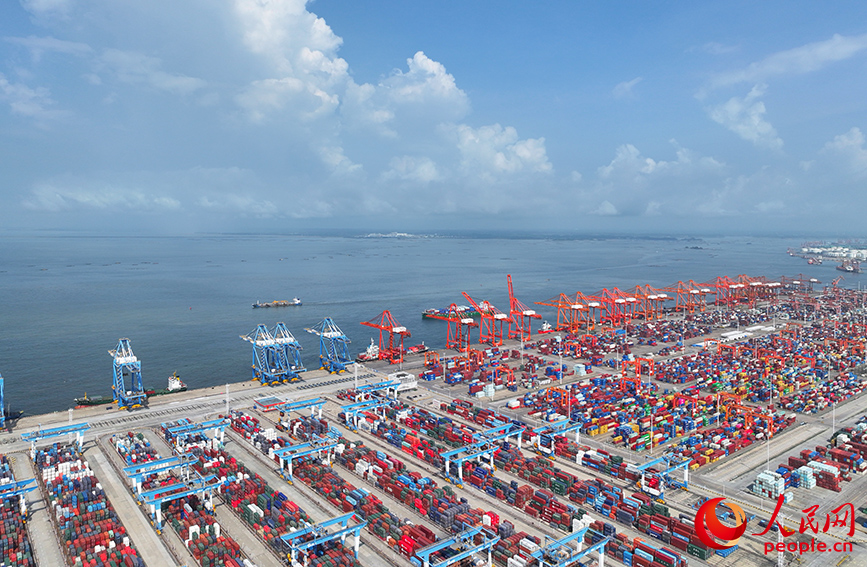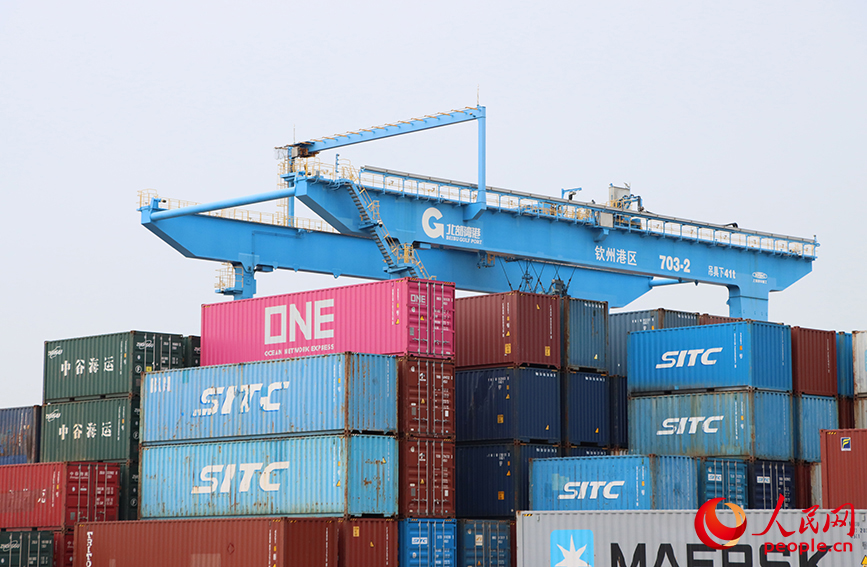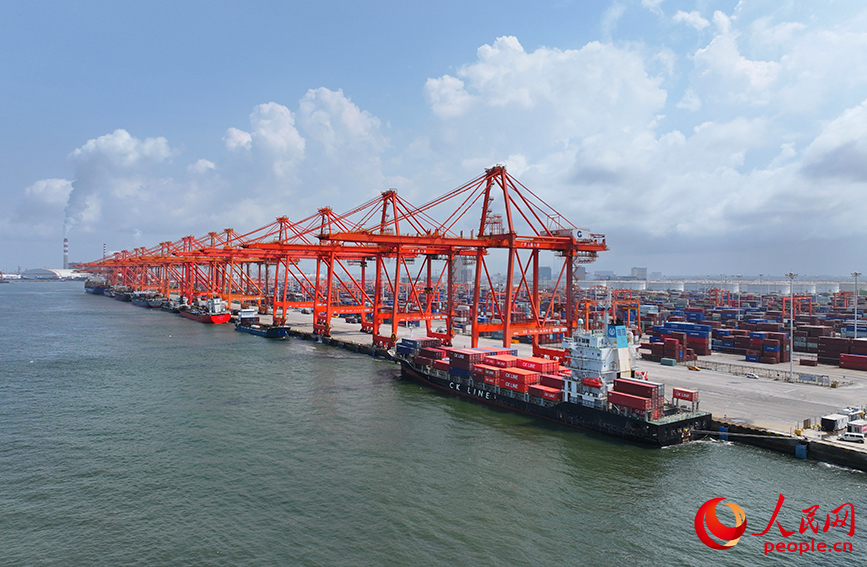A glimpse of an automated container terminal in S China's Guangxi

Photo shows an aerial view of the Qinzhou automated container terminal, the Beibu Gulf Port, south China's Guangxi Zhuang Autonomous Region. (People's Daily Online/Fu Huazhou)
At the Qinzhou automated container terminal in the Beibu Gulf Port, south China's Guangxi Zhuang Autonomous Region, driverless vehicles shuttle containers like oversized building blocks.
From a remote control room a kilometer away, an operator can maneuver multiple rail-mounted cranes in the world's first U-shaped container yard using just a joystick, effortlessly handling containers weighing tens of tonnes and ensuring rapid loading and unloading.

Photo shows a busy scene at the Qinzhou automated container terminal, the Beibu Gulf Port, south China's Guangxi Zhuang Autonomous Region. (People's Daily Online/Fu Huazhou)

Photo shows a busy scene at the Qinzhou automated container terminal, the Beibu Gulf Port, south China's Guangxi Zhuang Autonomous Region. (People's Daily Online/Fu Huazhou)
The Beibu Gulf Port is the international maritime gateway of the New International Land-Sea Trade Corridor and a key hub connecting with ASEAN. Sea-rail intermodal freight trains carry over 1,200 types of goods, including electronics, vehicles and auto parts, machinery, small appliances, and food.

Automated loading and unloading equipment operate at the Qinzhou automated container terminal, the Beibu Gulf Port, south China's Guangxi Zhuang Autonomous Region. (People's Daily Online/Fu Huazhou)

Thousands of containers are stacked neatly like building blocks at the Qinzhou automated container terminal, the Beibu Gulf Port, south China's Guangxi Zhuang Autonomous Region. (People's Daily Online/Fu Huazhou)
As China's first automated container terminal for sea-rail intermodal transport, the port is equipped with advanced, intelligent, and energy-efficient loading and transport machinery. It operates multiple automated systems, and by leveraging cutting-edge technologies such as artificial intelligence (AI), big data, cloud computing, and automated control, the terminal is information-driven, highly standardized, and fully automated.

Photo shows a busy scene at the Qinzhou automated container terminal, the Beibu Gulf Port, south China's Guangxi Zhuang Autonomous Region. (People's Daily Online/Fu Huazhou)

A recently docked cargo ship awaits unloading at the Qinzhou automated container terminal, the Beibu Gulf Port, south China's Guangxi Zhuang Autonomous Region. (People's Daily Online/Fu Huazhou)
Photos
Related Stories
- Feature: Opportunities knock for Pakistani entrepreneur in China's free trade port
- Heavy traffic moves through China's Ningbo-Zhoushan Port, the world's top cargo hub
- China-Mongolia border port handles milestone 20,000 China-Europe freight trains
- China's smart ports drive greener, smarter global trade
- Cargo throughput at Tangshan Port reaches 433.56 million tonnes in H1
- Cargo throughput at Huanghua Port exceeds 179 mln tonnes in H1
- China's port economy powers ahead with strong momentum
- China's landmark trade corridor cargo volume jumps 76.9 pct in H1
- China's Beibu Gulf Port sees sea-rail intermodal transport volume exceed 250,000 TEUs in H1
- Nanning International Railway Port: A strategic hub for the New Western Land-Sea Corridor
Copyright © 2025 People's Daily Online. All Rights Reserved.









